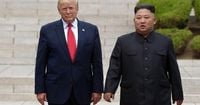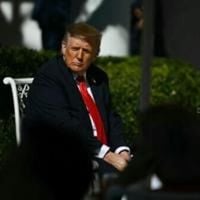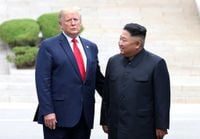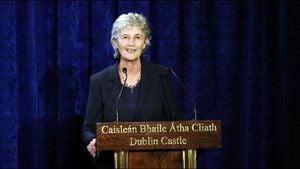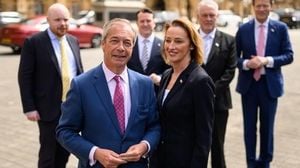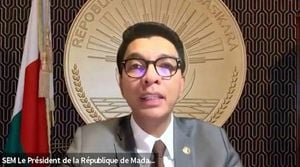As U.S. President Donald Trump prepares for a high-profile visit to South Korea from October 29 to 30, 2025, the world is watching with bated breath for what could be another historic moment on the Korean Peninsula. Speculation is swirling over the possibility of a surprise meeting between Trump and North Korean leader Kim Jong Un, a potential fourth summit that would echo their dramatic encounters of years past. The visit, which includes a scheduled meeting with Chinese President Xi Jinping on the morning of October 30 before Trump returns to Washington that night, has left a conspicuous gap in the president’s itinerary—fueling rumors of a last-minute diplomatic dash.
According to AP and Donga Ilbo, the buzz began when Trump, speaking to reporters aboard Air Force One on October 24, declared, “If you want to put out the word, I'm open to it,” in response to questions about meeting Kim at the Demilitarized Zone (DMZ). This openness, reminiscent of his 2019 impromptu meeting with Kim at Panmunjom, has reignited hopes—and anxieties—about the prospect of renewed U.S.-North Korea diplomacy. Trump’s willingness is not merely a passing comment; he has repeatedly expressed his desire to restore direct dialogue with Kim, whom he’s described as “a smart guy.”
The last Trump-Kim meeting, hastily arranged within 32 hours after a Twitter invitation, took place in June 2019 at the border village of Panmunjom. It was a moment that briefly revived stalled nuclear talks and captured the world’s attention. But much has changed since then. North Korea’s nuclear arsenal has grown, and Kim has tightened diplomatic ties with both Russia and China, giving him more leverage—and perhaps less urgency—for talks with Washington.
South Korea’s Unification Minister Chung Dong-young emphasized on October 24 that the timing is critical. “Arranging another summit later would be far more difficult and require extensive preparation,” Chung told reporters at the Seoul Government Complex. He pointed out that a meeting now would not only boost North Korea’s international standing but also help secure the peace and stability necessary for economic development and improved living standards for its people. “The leaders should not miss the opportunity,” he urged, referencing the beautification work recently observed at Panmungak, a North Korean building at Panmunjom—marking the first such activity this year. This, according to Chung, could be a subtle sign that Pyongyang is preparing for a diplomatic event.
Yet, not everyone is convinced that a summit is imminent. National Security Adviser Wi Sung-lac, speaking at a Yongsan presidential office briefing, struck a more cautious tone. Authorities, he said, are “monitoring developments but have seen no new indications of a summit.” The United Nations Command has suspended special tours of the Joint Security Area during Trump’s visit, a move that some interpret as logistical groundwork for a high-level meeting, while others see it as routine security protocol.
Analysts remain divided on the likelihood and potential impact of a Trump-Kim encounter. Lim Eul-chul, a professor at Kyungnam University’s Institute for Far Eastern Studies, told Donga Ilbo that it’s “difficult to imagine Kim meeting Trump while publicly expressing solidarity with Moscow” amid the ongoing Russia-Ukraine conflict. Indeed, North Korea’s state news agency reported that Kim, during a recent groundbreaking ceremony for a memorial to Russian war dead, pledged that Pyongyang would “always stand with Moscow.” This deepening alliance complicates the diplomatic landscape, making the calculus for a U.S.-North Korea summit far more intricate than in 2019.
The broader context is equally complex. Since the collapse of earlier diplomacy, Kim Jong Un has accelerated the development of nuclear-capable missiles, some designed to reach the U.S. mainland and its allies. He’s also sought greater recognition as a nuclear power—a status that would pressure the United Nations to lift sanctions, something the U.S. and its partners have steadfastly refused without full denuclearization. “Kim’s sense of urgency for talks with the United States could be much weaker now than it was six years ago,” said Kim Tae-hyung, a professor at Soongsil University, as quoted by AP.
Still, the possibility of dialogue is not off the table. Kim himself, breaking months of silence, recently acknowledged “good personal memories” of Trump and suggested he might consider returning to talks—if Washington abandons what he called its “delusional obsession with denuclearization.” This rhetorical softening, coupled with the suspension of civilian tours at Panmunjom and the flurry of speculation among regional experts, has led some to believe that the door remains ajar for future engagement, if not during this visit, then perhaps in the months to come.
Ban Kil Joo, assistant professor at the Korea National Diplomatic Academy, observed that “prospects for their meeting have increased,” citing both Kim’s comments and recent developments at the DMZ. However, Ban and others caution that, absent significant U.S. concessions—such as easing sanctions or recognizing North Korea’s nuclear status—Pyongyang may see little incentive to rush back to the table. Koh Yu-hwan, former president of the Institute of National Unification, told AP that any meeting around the APEC summit is “unlikely to produce meaningful results,” unless Trump brings something new to entice Kim.
The stakes, of course, are enormous. South Korea, lacking its own nuclear deterrent, relies on the U.S. “nuclear umbrella” for protection. Kim Taewoo, another former head of the Institute of National Unification, warned that if North Korea retains the ability to strike the U.S., “can the U.S. freely exercise its extended deterrence pledge in the event that North Korea attacks South Korea?” The question is more than academic; it goes to the heart of regional security and the credibility of American commitments in East Asia.
For Trump, a meeting with Kim would offer a high-profile diplomatic achievement at a time when he faces numerous domestic challenges. For Kim, the calculus is trickier. While he may see Trump as a rare U.S. leader willing to consider concessions, he also knows that any deal falling short of full denuclearization could spark calls in South Korea and Japan for their own nuclear capabilities—a development that would further destabilize the region.
As the hours tick down to Trump’s arrival in Seoul, the world waits to see whether history will repeat itself at Panmunjom. Whether or not the two leaders meet, the shadow of their past summits—and the nuclear stakes they represent—will loom large over the Korean Peninsula for months to come.
